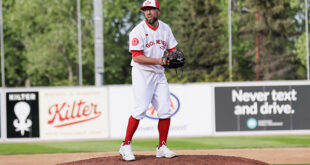 When great New York baseball seasons are recalled, the years 1927, 1961 and 1998 (Yankees), 1954 (Giants), 1955 (Dodgers), 1969 and 1986 (Mets) are among those frequently mentioned. But when it comes to the Yankees and Mets, the first year that both teams were truly first-rate at the same time was 1985, a tumultuous time in the Bronx and one of youth and hope in Queens. The only year of Billy Martin’s fourth (and not final) term as Yankees skipper and the second of Davey Johnson’s six-plus at the Mets’ helm showed two teams as divergent as their leaders. Martin took over for Yogi Berra just 16 games into the season, which caused the all-time great a self-imposed absence from Yankee Stadium for years thereafter.
When great New York baseball seasons are recalled, the years 1927, 1961 and 1998 (Yankees), 1954 (Giants), 1955 (Dodgers), 1969 and 1986 (Mets) are among those frequently mentioned. But when it comes to the Yankees and Mets, the first year that both teams were truly first-rate at the same time was 1985, a tumultuous time in the Bronx and one of youth and hope in Queens. The only year of Billy Martin’s fourth (and not final) term as Yankees skipper and the second of Davey Johnson’s six-plus at the Mets’ helm showed two teams as divergent as their leaders. Martin took over for Yogi Berra just 16 games into the season, which caused the all-time great a self-imposed absence from Yankee Stadium for years thereafter.
While neither team won the pennant, the Yankees (97-64) and Mets (98-64) re-energized baseball in the Big Apple, though that excitement on both sides of the Whitestone Bridge would prove fleeting: the Mets ascended to their 108-win, World Series championship heights a year later while the Yanks slid inexorably to the second division and eventually into last place by the end of the 80s, the first decade in the past seven without even one Series crown. The Mets, for their part, waited a couple more years for their decline, bottoming out with a 59-103 mark in 1993.
In Doc, Donnie, The Kid and Billy Brawl: How the 1985 Mets and Yankees Fought for New York’s Baseball Soul (University of Nebraska Press, 312 pps, $29.95), Chris Donnelly captures the essence of how entranced both fan bases were, as their respective teams battled at the top of their divisions, as they played meaningful baseball in both Yankee and Shea Stadium through September.
The rising Mets, essentially the same bunch that would set the baseball world on its ear in 1986, were led by Dwight Gooden, unstoppable in his best year (and only 20-win season, which seemed so improbable at the time) and Gary Carter in his first year with the team. Don Mattingly put together an MVP campaign (.324, 35 home runs, 145 RBI), teaming with Hall of Famers Rickey Henderson and Dave Winfield and several other top sluggers to form a formidable offensive squad.

Donnelly goes through the season chronologically, alternating between the Mets’ and Yankees’ narratives, noting the confluences therein as warranted, like “Baseball Thursday,” September 12, a rare home date for both teams with the Blue Jays and Cardinals, the teams they were pursuing, in town. Within the context of the results and standings, he weaves the stories of players on the ascent like Gooden, Darryl Strawberry and Mattingly, as well as those on the back end of their careers, like George Foster, who could never match his halcyon Reds days, and Phil Niekro, who finally earned his 300th win—with his recently-acquired brother Joe as a teammate—in the second of back-to-back 16-victory years for the Yankees.
Both teams’ rosters were replete with characters of all sorts, from Gooden, Carter and Keith Hernandez to Henderson, Dave Righetti and Ed Whitson, the star-crossed hurler whose hotel barroom clash with Martin pretty much spelled the end of both of their tenures in Pinstripes. Donnelly chronicles George Steinbrenner at the near-height of his madness, desperately wanting to field another champion after six years without a title, contrasting the Yankees collection of mostly older stars with the composition of the Mets, a mostly homegrown team sprinkled with a few key additions.
It makes for a compelling read, some of it familiar to deep fans of either team, with a few surprises (Carlton Fisk, for example, who refused a trade to the Yankees after the year; and Foster, who uncharacteristically started a brawl and then, a year later, refused to join in a melee against his former team, the Reds, effectively closing his time with the Mets). Fans of both teams, or 1980s baseball in general, will delight in the stories in the breezy read.
 Sports Media Report
Sports Media Report
